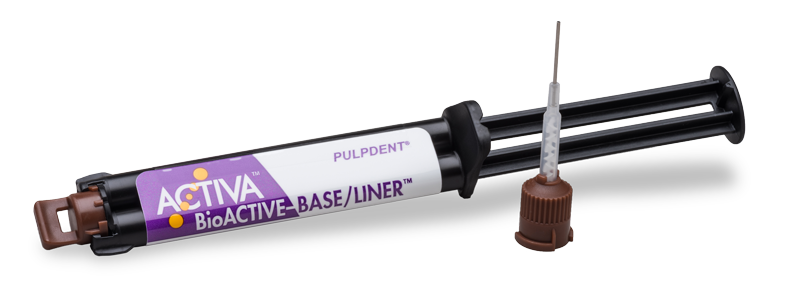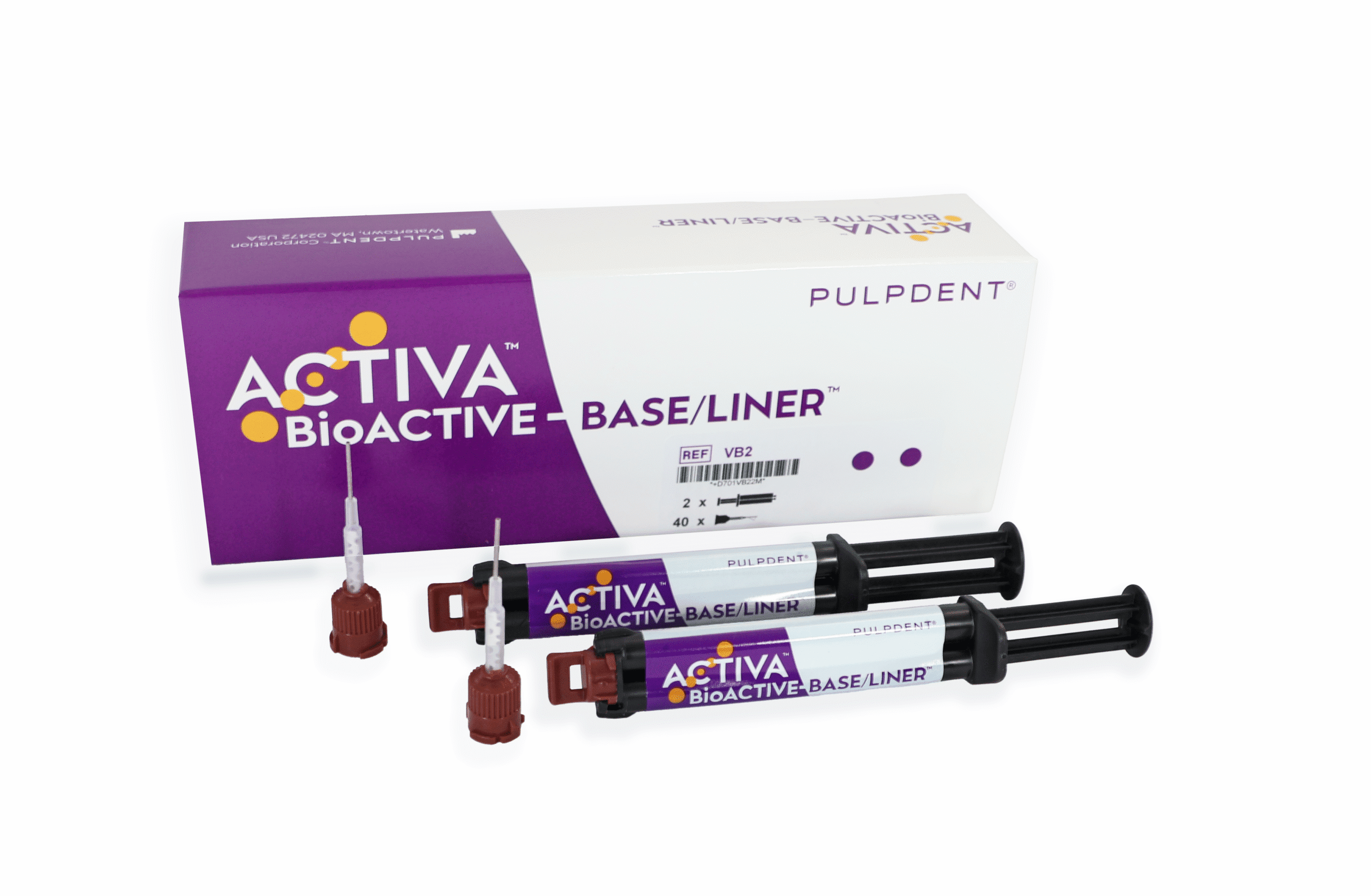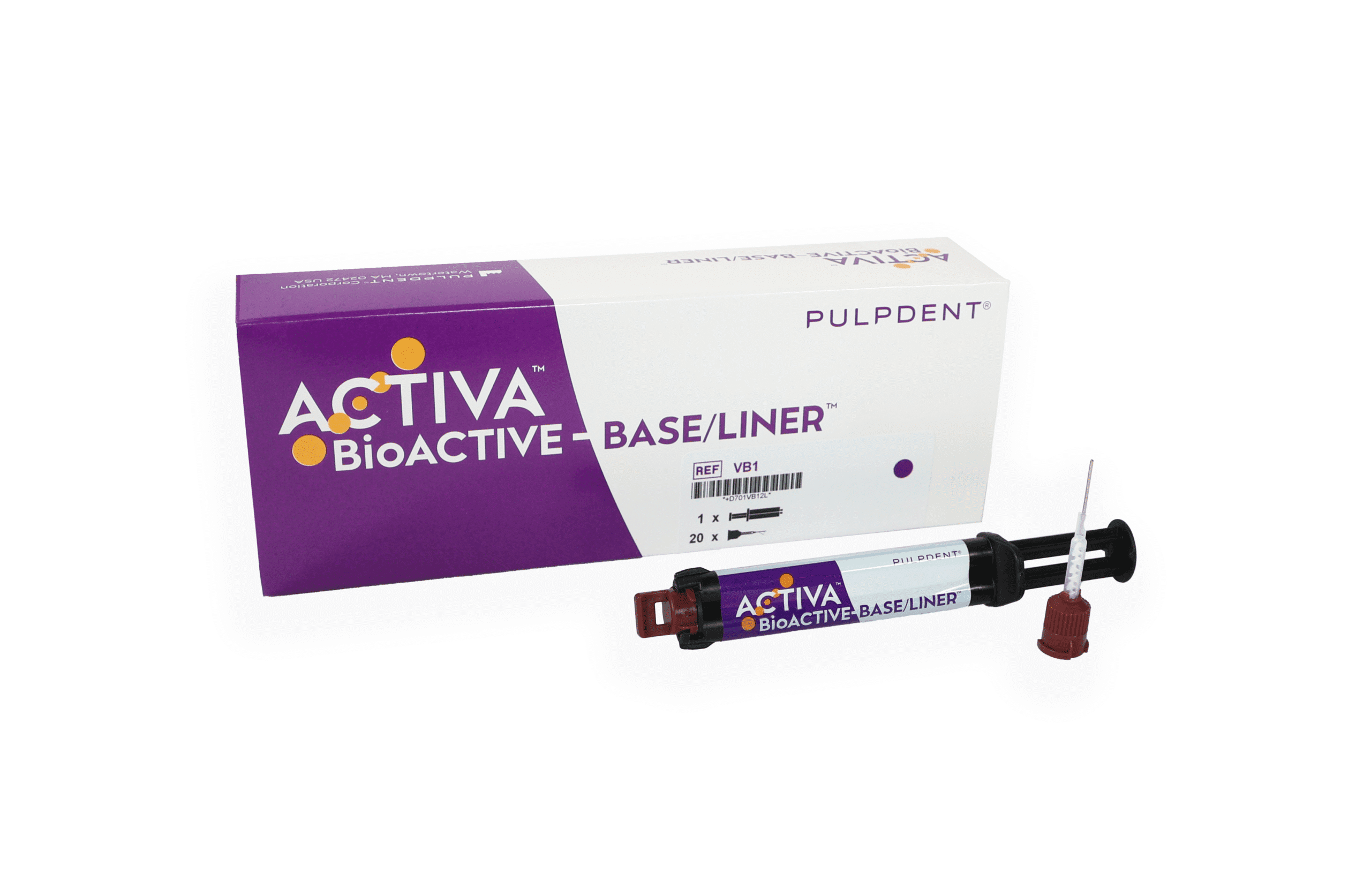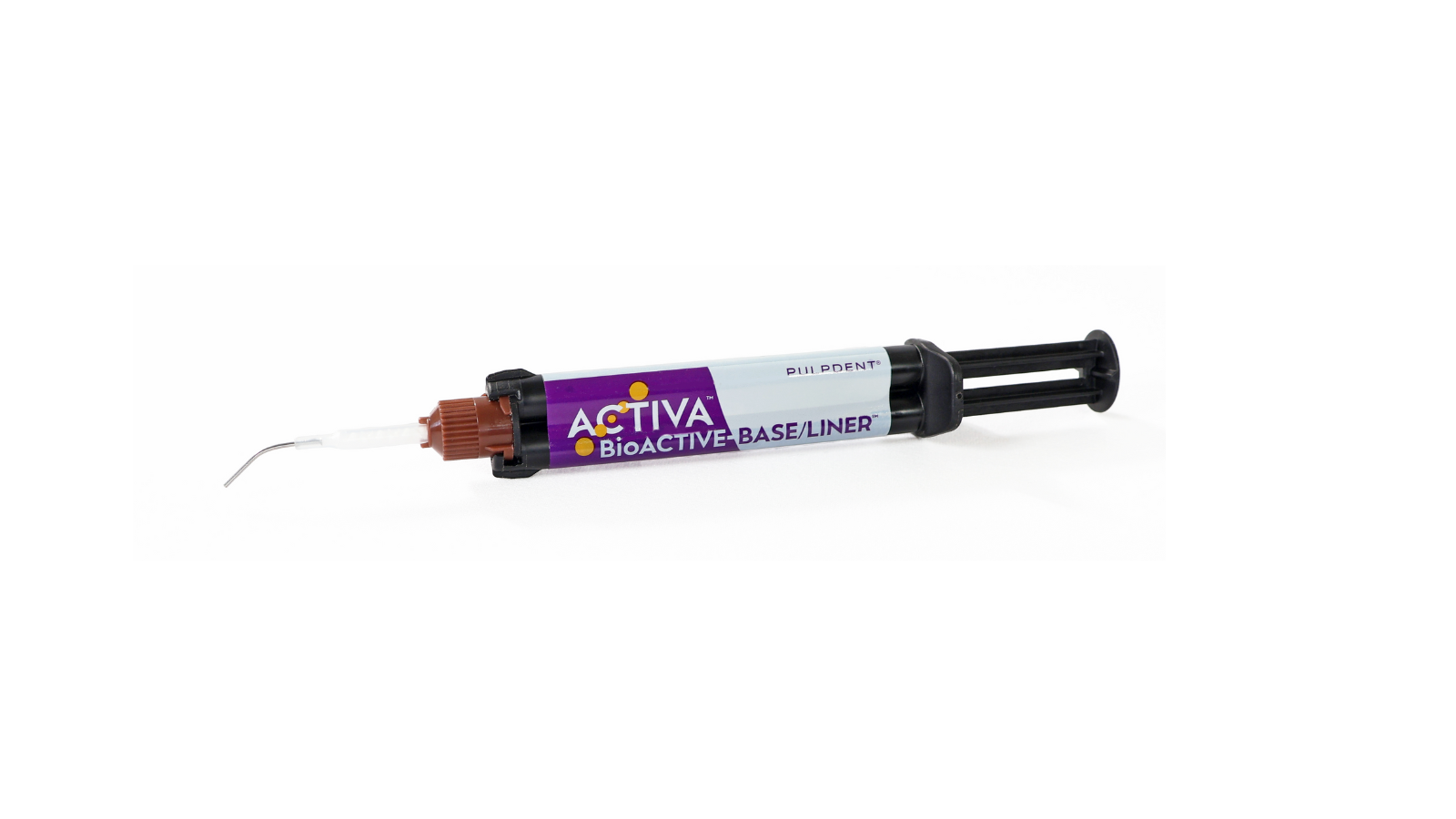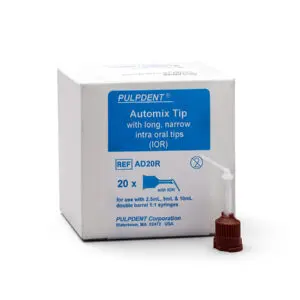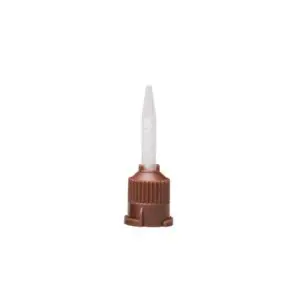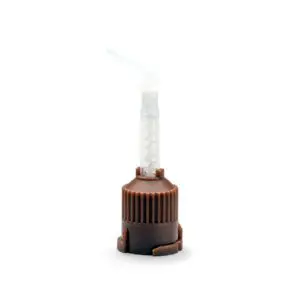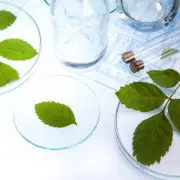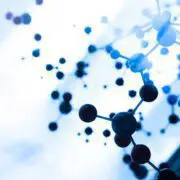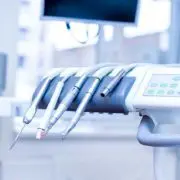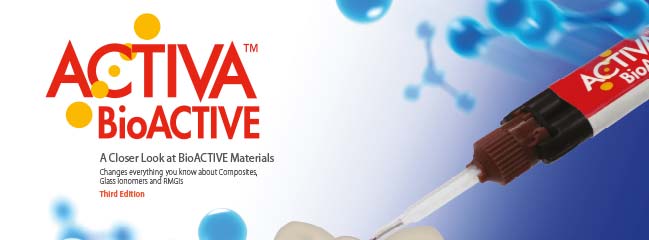- <¡a class="wtbx-button wtbx-button-link" title="Instrucciones de uso" href="/wp-admin/admin-ajax.php?action=mo_sps_download_file&file_id=01FQXC435MSJK2IM55K5EZJ4Z2KCSQWTCO&drive_id=b!h7DcVoDhVk2Z4dbVn4JSUs1dMiSbyPNDgl2hZvEEz_Ak_961BcWuTpekYWmjdwgy" target="_blank" rel="noopener">Instrucciones de uso
- <¡a href="/wp-admin/admin-ajax.php?action=mo_sps_download_file&file_id=01FQXC435LKH7QJSMVJFDYKARH4PTF2KA3&drive_id=b!h7DcVoDhVk2Z4dbVn4JSUs1dMiSbyPNDgl2hZvEEz_Ak_961BcWuTpekYWmjdwgy">Instrucciones de uso (Intl.)
- <¡a class="wtbx-button wtbx-button-link" title="FDS" href="/wp-admin/admin-ajax.php?action=mo_sps_download_file&file_id=01FQXC432NOTFAHJV2SRFICAZROQHQVZLW&drive_id=b!h7DcVoDhVk2Z4dbVn4JSUs1dMiSbyPNDgl2hZvEEz_Ak_961BcWuTpekYWmjdwgy" target="_blank" rel="noopener">FDS
Key Features:
Tough, resilient, resists chipping and crumbling
Releases and recharges calcium, phosphate and fluoride
Chemically bonds – Seals against microleakage
No sensitivity
Moisture friendly – Simplified technique
Description:
ACTIVA BioACTIVE-BASE/LINER delivers all the advantages of glass ionomers in a strong, resilient resin matrix that will not chip or crumble. It chemically bonds to teeth, seals against microleakage and releases calcium, phosphate and fluoride. It is more bioactive than glass ionomers, and is more durable and fracture resistant than composites, glass ionomers and RMGIs. 1,2,3,4,5,17,18
ACTIVA is the first bioactive base/liner with an ionic resin matrix, a shock-absorbing resin component and bioactive fillers that mimic the physical and chemical properties of natural teeth. It releases and recharges with calcium, phosphate and fluoride ions,1,7,11 delivering long-term benefits and better oral health care for your patients.
ACTIVA contains no Bisphenol A, No Bis-GMA and no BPA derivatives.
Code and Description:
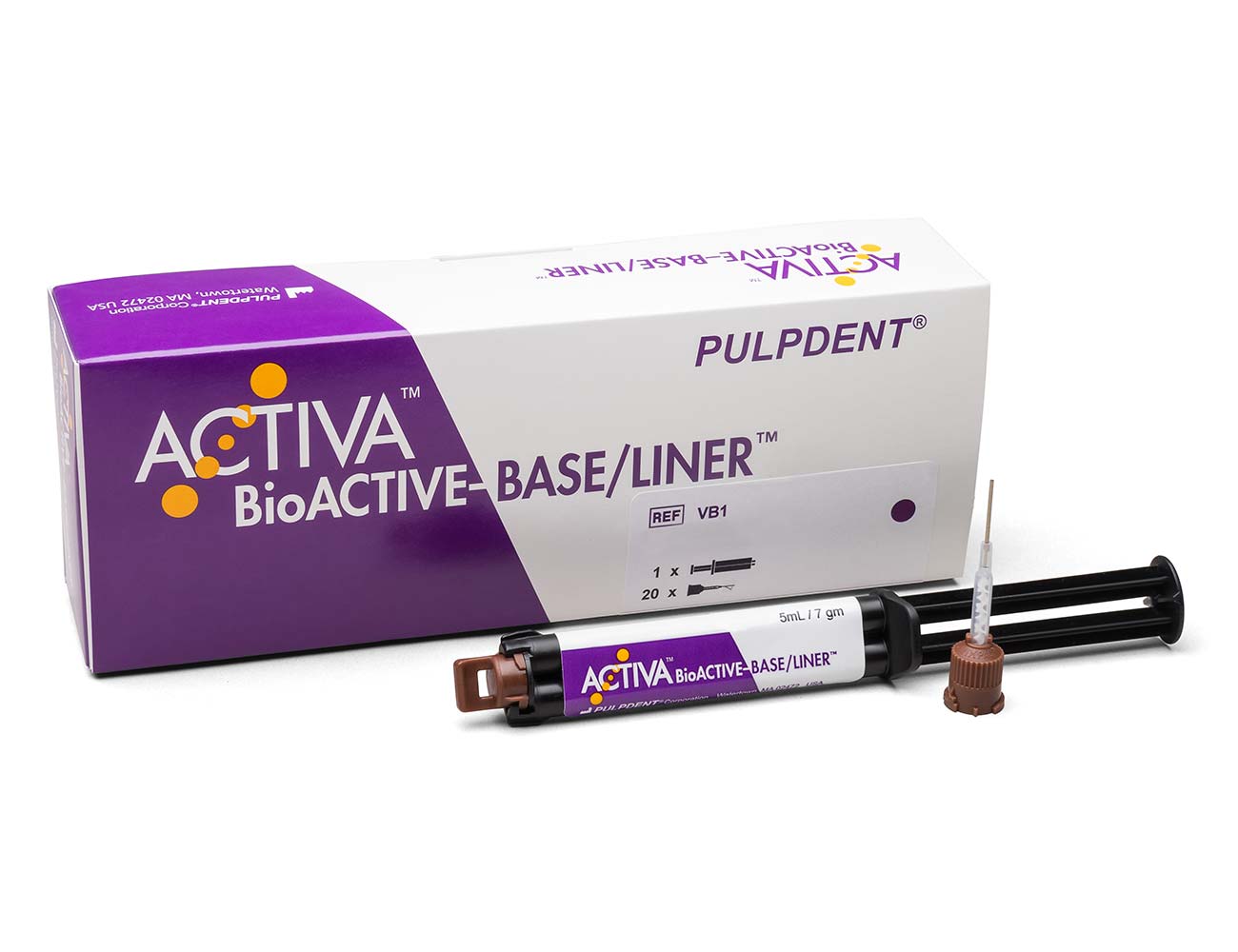
VB1 – SINGLE PACK: 5mL/7gm syringe + 20 automix tips with bendable 20-gauge metal cannula
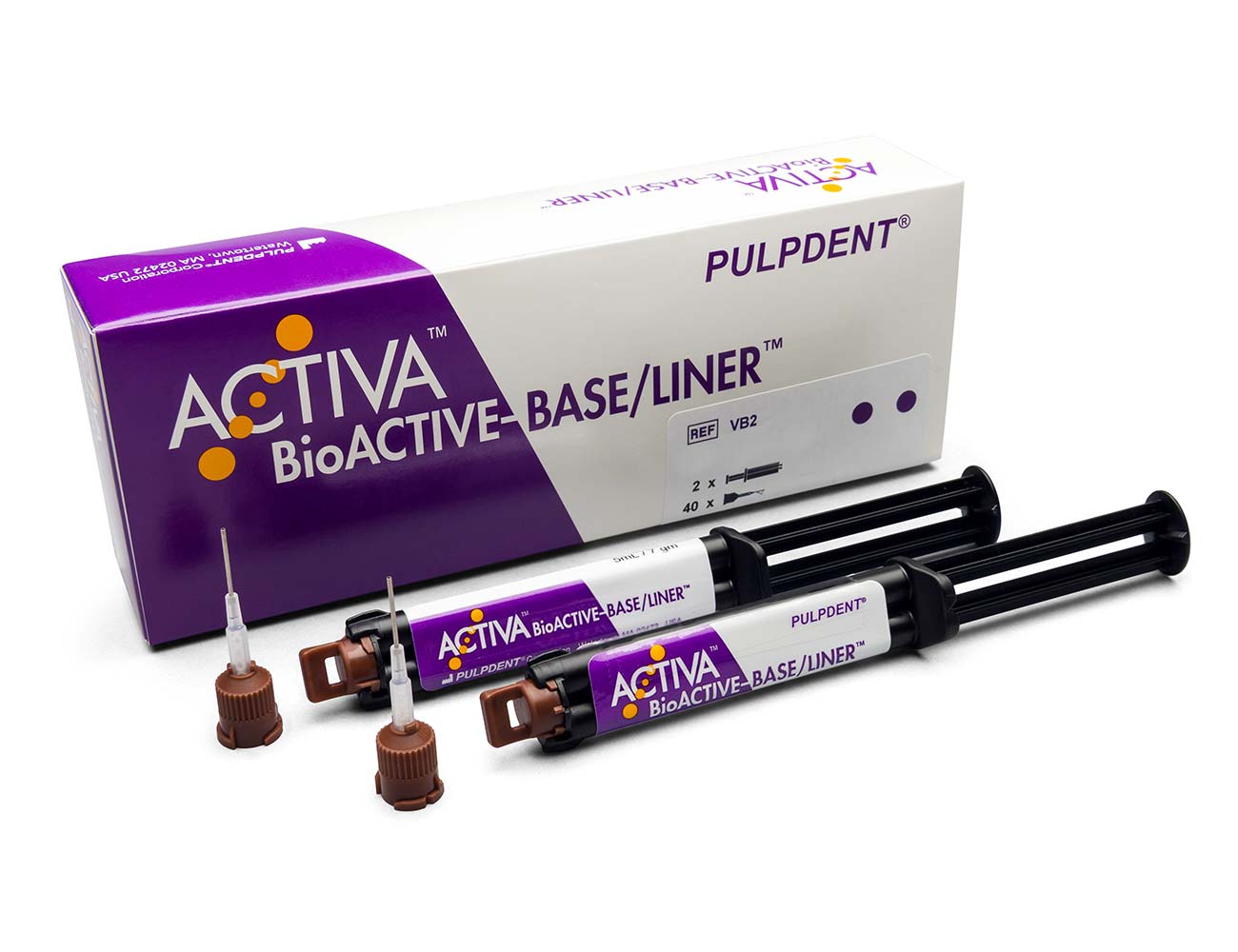
VB2 – VALUE PACK: 2 x 5mL/7gm syringe + 40 automix tips with bendable 20-gauge metal cannula
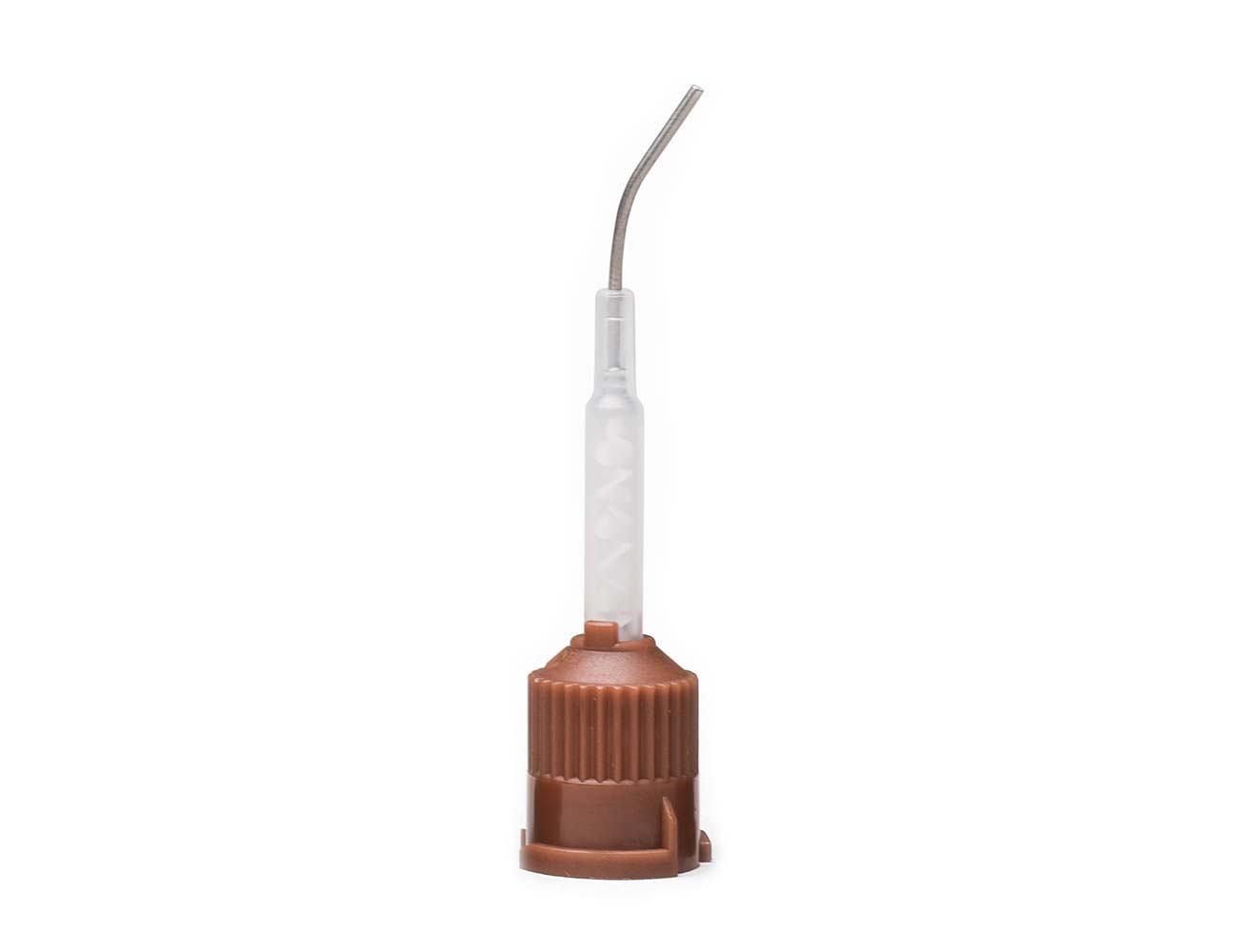
A20N1 – Automix Tips, clear, with bendable 20-gauge metal cannula- pkg of 20 Use for ACTIVA and for 2.5mL, 5mL and 10mL 1:1 automix syringes

A50N1 – Automix Tips, clear, with bendable 20-gauge metal cannula- pkg of 50 Use for ACTIVA and for 2.5mL, 5mL and 10mL 1:1 automix syringes
Order Now:
Product:
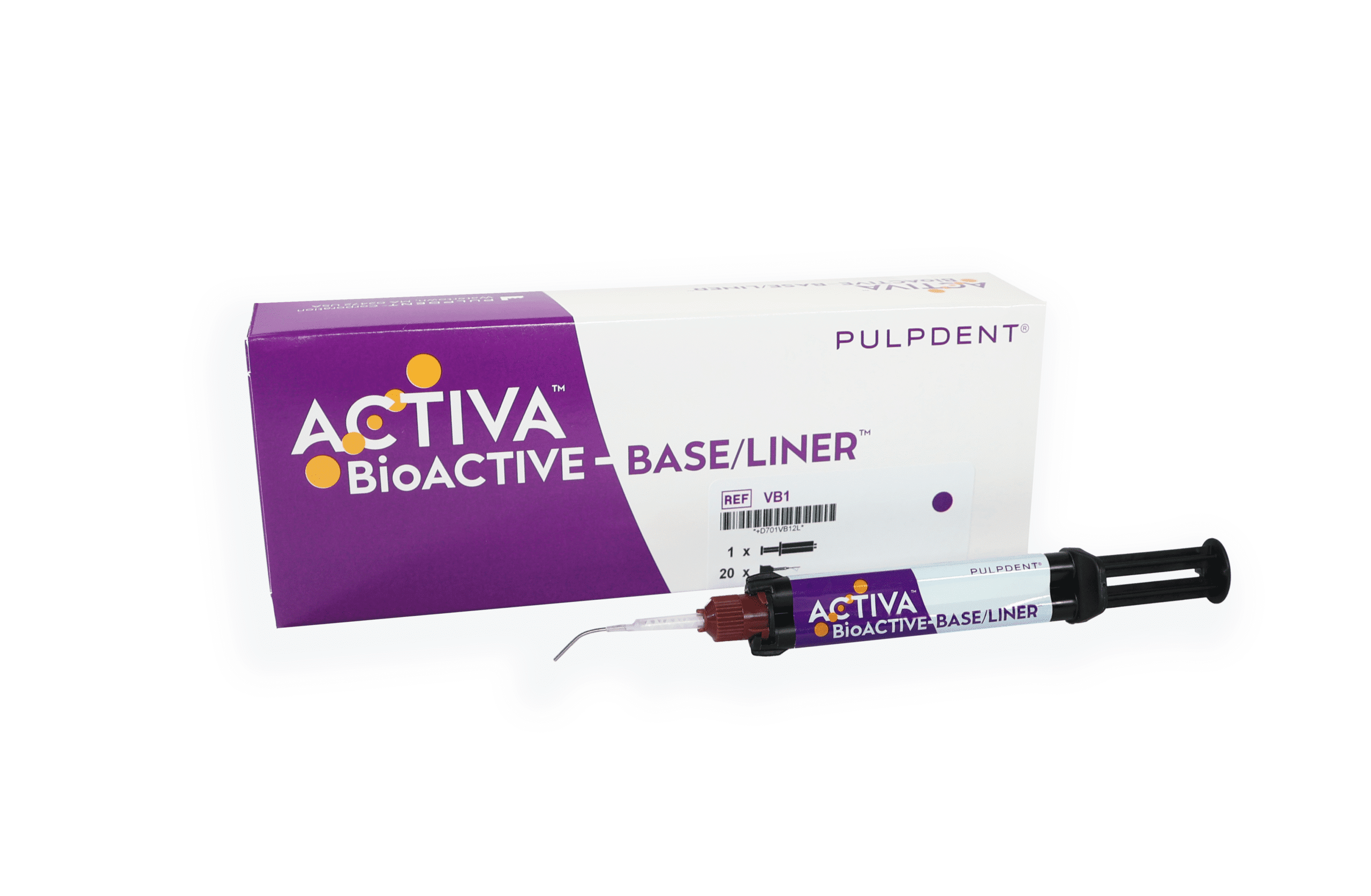
ACTIVA BioACTIVE-BASE/LINER ofrece todas las ventajas de los ionómeros de vidrio en una matriz de resina fuerte y resistente que no se astilla ni se desmorona. Se adhiere químicamente a los dientes, sella contra las microfiltraciones y libera calcio, fosfato y flúor. Es más bioactivo que los ionómeros de vidrio, y más duradero y resistente a las fracturas que los composites, los ionómeros de vidrio y los RMGI. 1,2,3,4,5,17,18
ACTIVA es la primera base/liner bioactiva con una matriz de resina iónica, un componente de resina amortiguadora y rellenos bioactivos que imitan las propiedades físicas y químicas de los dientes naturales. Libera y recarga iones de calcio, fosfato y flúor,1,7,11 proporcionando beneficios a largo plazo y un mejor cuidado de la salud bucal de tus pacientes.
ACTIVA no contiene Bisfenol A, Bis-GMA ni derivados del BPA.
Características principales:
- Duro, resistente, resiste el astillado y el desmoronamiento
- Libera y recarga calcio, fosfato y flúor
- Se adhiere químicamente - Sella contra las microfugas
- Sin sensibilidad
- Antihumedad - Técnica simplificada
Documentos clínicos
Recursos
Ciencia y Literatura
Tratamiento versátil y cotidiano de la caries
Relleno a granel Clase II
Muestra una gran Clase II restaurada con ACTIVA BioACTIVE-BASE/LINER y ACTIVA BioACTIVE-RESTORATIVE. ACTIVA proporciona una bioactividad continua y duradera y beneficios para el paciente.
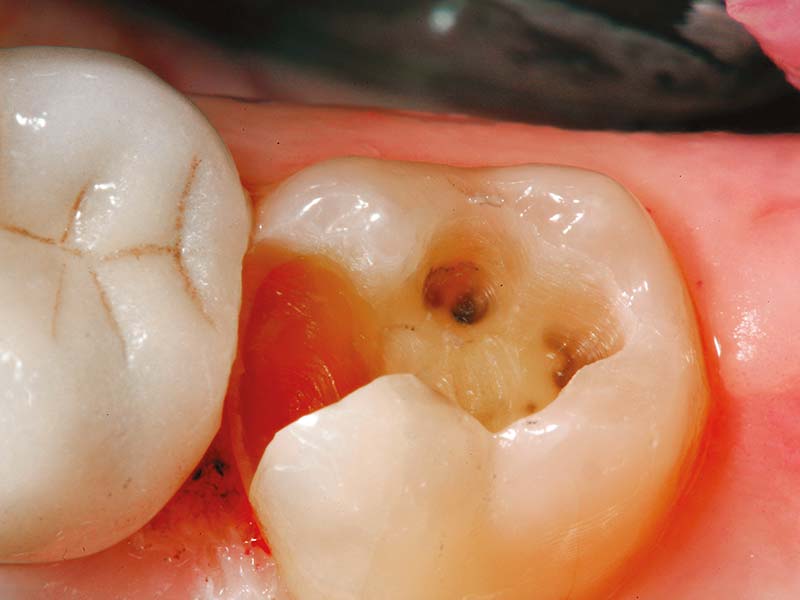
Fig. 1: Muestra el diente preparado
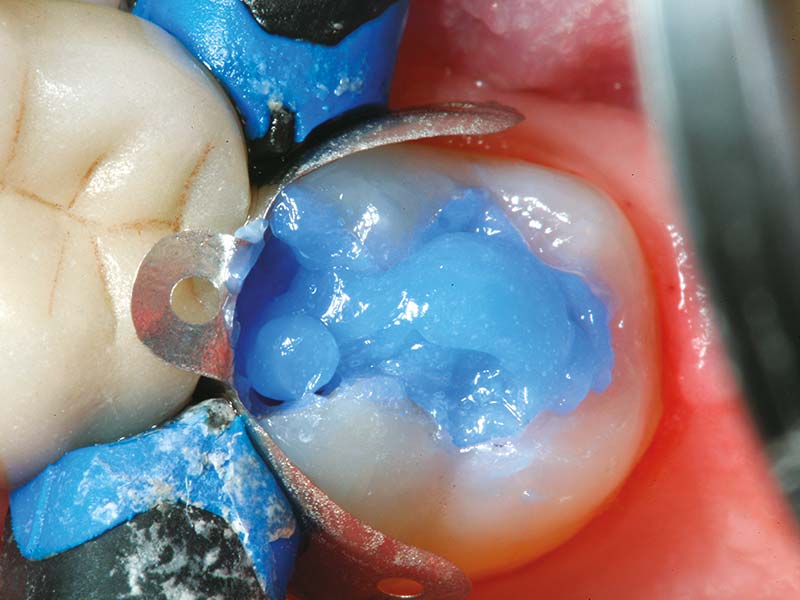
Fig. 3: Diente grabado durante 5 segundos con gel de ácido fosfórico Etch-Rite
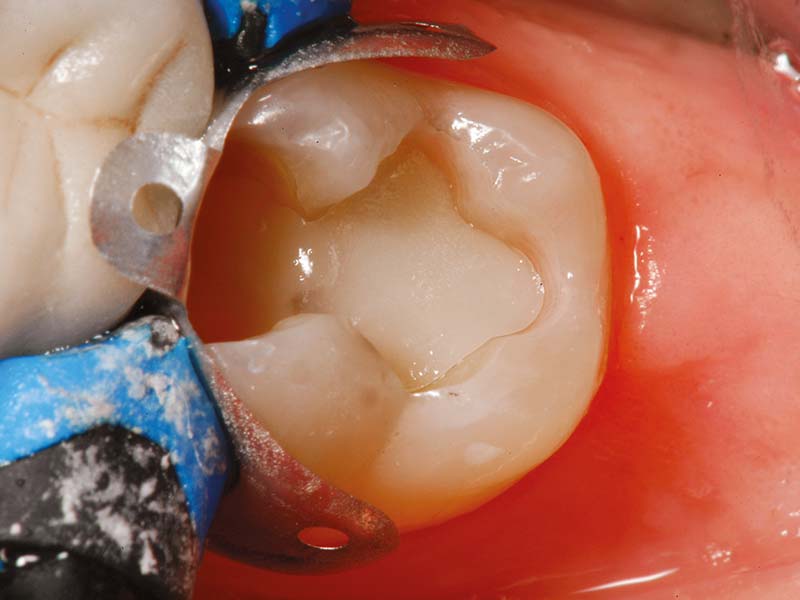
Fig. 2: Muestra ACTIVA BioACTIVE-BASE/LINER tras la fotopolimerización
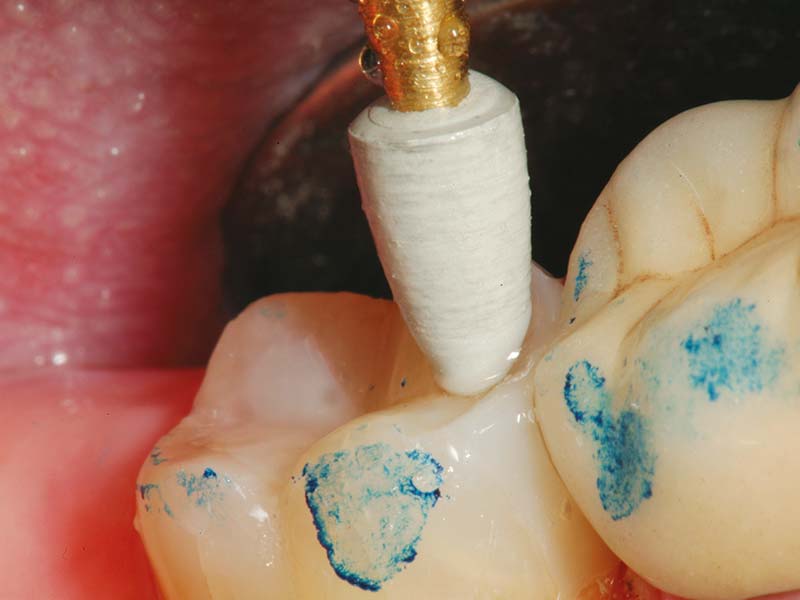
Fig. 4: Restauración de acabado con composite o ACTIVA BioACTIVE-RESTORATIVE
Fotos cortesía del Dr. Robert Lowe
PROPIEDADES MECÁNICAS:
Pruebas independientes demuestran que la resistencia a la compresión, el desgaste y la durabilidad son comparables a los de los principales composites. La resistencia a la fractura es superior a la de los composites tradicionales, los ionómeros de vidrio modificados con resina y los ionómeros de vidrio.
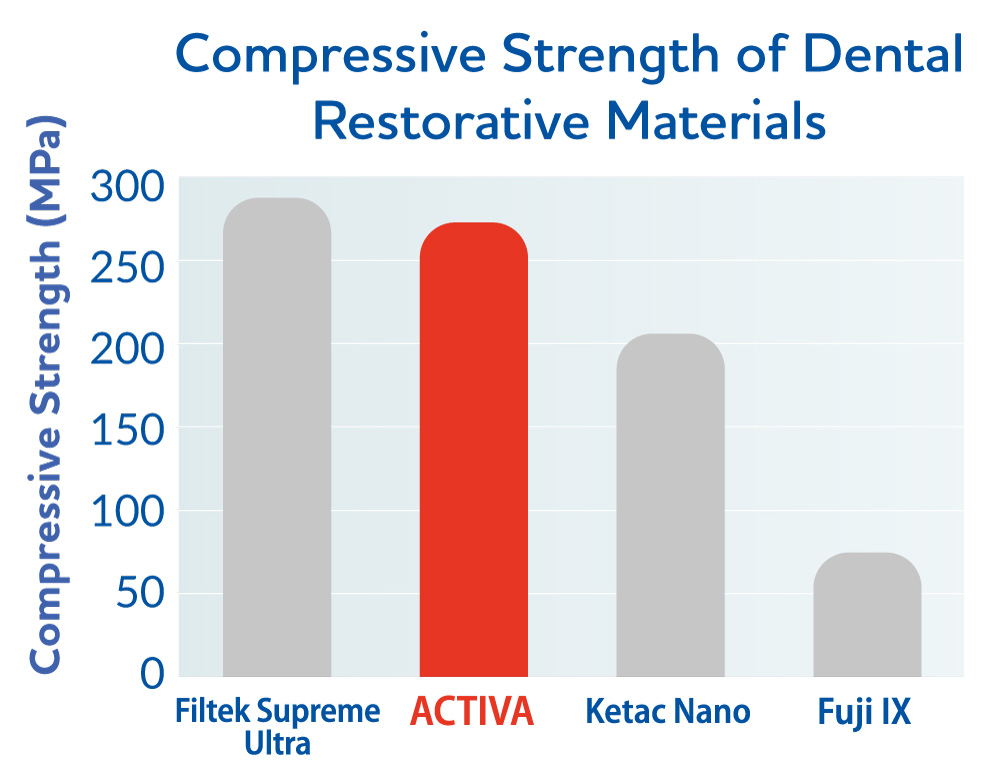
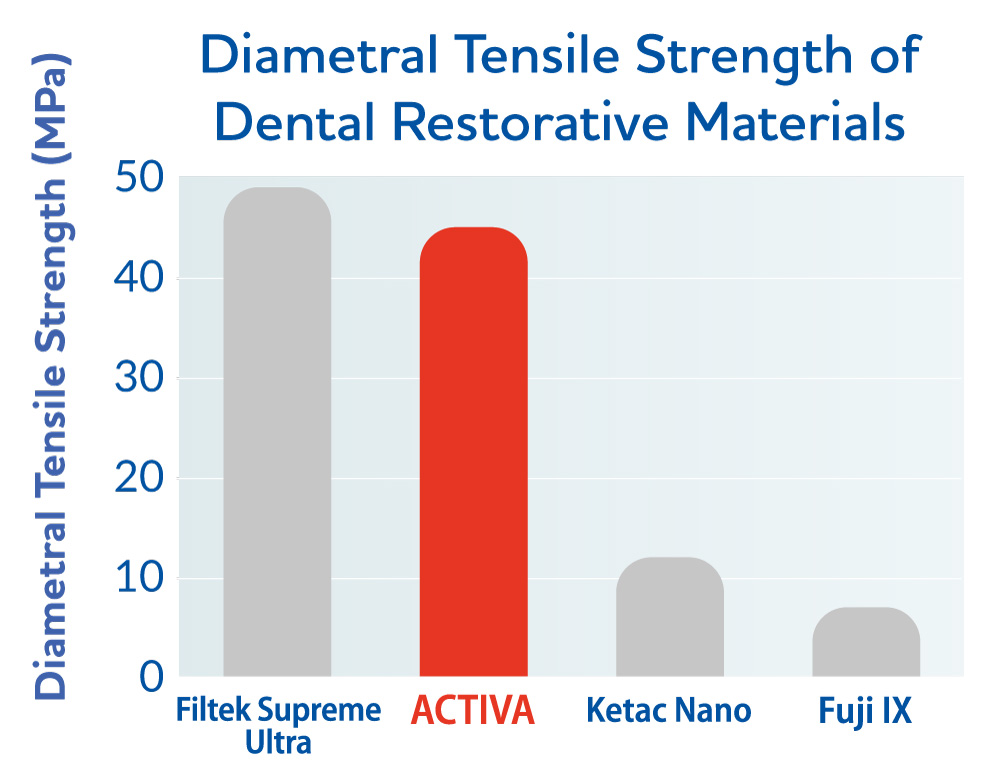
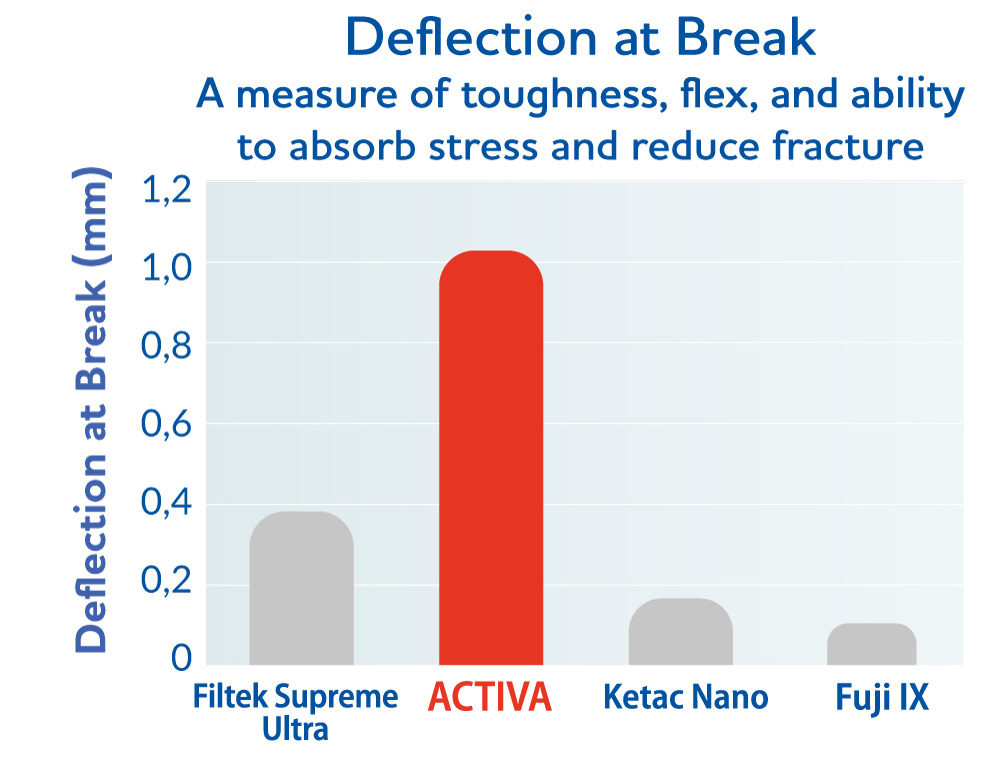
*No son marcas registradas de Pulpdent Corporation
LIBERACIÓN/RECARGA DE CALCIO, FLÚOR Y FOSFATO:
Los siguientes gráficos muestran la liberación y recarga de calcio, fosfato y flúor de cuatro materiales restauradores. ACTIVA BioACTIVE-RESTORATIVE (así como el resto de la familia ACTIVA BioACTIVE) muestran una liberación y recarga continuas de estos minerales esenciales, que se encuentran de forma natural en la saliva y se complementan con fuentes dietéticas y la liberación de ACTIVA. Esta difusión de iones sólo está disponible en materiales que puedan transportar agua. Los materiales hidrófobos tradicionales son pasivos y no tienen capacidad para este comportamiento dinámico.
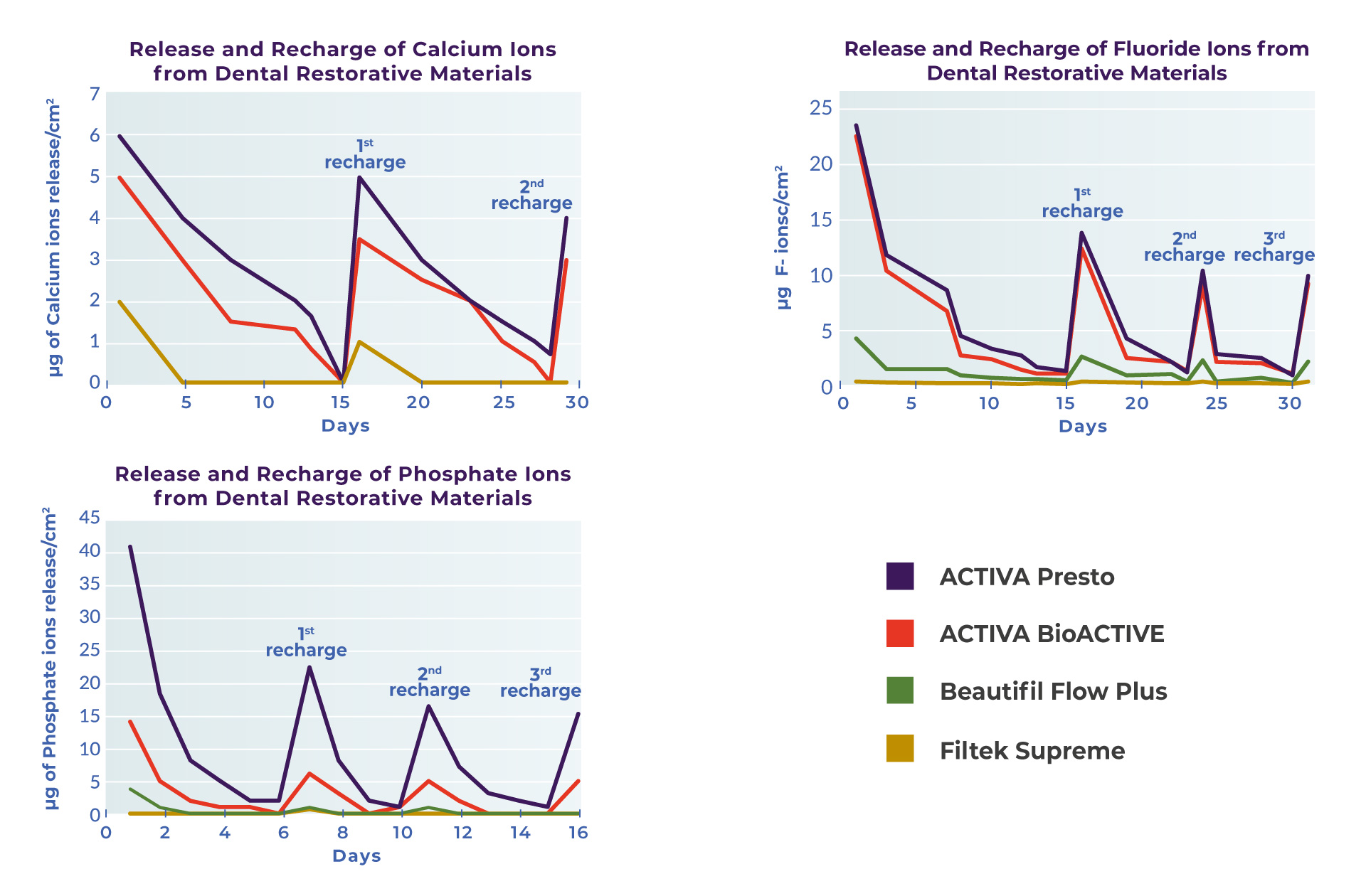
Fuente: Pruebas Pulpdent
Order Now
ACTIVA™ BioACTIVE - BASE/LINER™.
Habla con tu representante de ventas para saber cómo hacer un pedido.
Información adicional
| Estilo | Kit, Kit Valor |
|---|---|
| Talla | 5 ml |
| Cantidad por paquete | 1, 2 |
| Cantidad de puntas aplicadoras | 20, 40 |
| Estilo de punta incluido | Cánula metálica plegable de calibre 20 |
Applicator Tip:
Physical Properties
Working time at room temperature:
90 seconds
Light cure setting time:
20 seconds
Initial self-cure setting time at 37°C:
≤5 minutes
Percentage filler by weight:
45%
Percentage reactive glass filler by weight:
15%
Fluoride release 7 days (cumulative):
23.8 µg/cm²
Flexural strength:
86 MPa / 12,470 Psi
Compressive strength:
226 MPa / 32,770 Psi
Diametral tensile strength:
37 MPa / 5365 Psi
Film thickness:
11 microns
Clinical Procedure
Shows large Class II restored with ACTIVA BioACTIVE-BASE/LINER and ACTIVA BioACTIVE-RESTORATIVE. ACTIVA delivers continuous, long-lasting bioactivity and patient benefits.

Fig. 1: Shows prepared tooth

Fig. 2: Shows ACTIVA BioACTIVE-BASE/LINER after light curing

Fig. 3: Tooth is etched for 5 seconds with Etch-Rite phosphoric acid gel

Fig. 4: Finish restoration using composite or ACTIVA BioACTIVE-RESTORATIVE
Photos courtesy of Dr. Robert Lowe
Science & Literature
- Fluoride ion release and recharge over time in three restoratives. Slowokowski L, et al. J Dent Res 93 (Spec Iss A_ 268, 2014 (iadr.org).
- Zmener O, Pameijer CH, Hernandez S. Resistance against bacterial leakage of four luting agents used for cementation of complete cast crowns. Am J Dent 2014;27(1):51-55.
- Zmener O, Pameijer CHH, et al. Marginal bacterial leakage in class I cavities filled with a new resin-modified glass ionomer restorative material. 2013.
- Flexural strength and fatigue of new Activa RMGIs. Garcia-Godoy F, et al. J Dent Res 93 (Spec Iss A)_ 254, 2014 (iadr.org).
- Deflection at break of restorative materials. University testing. Submitted for publication.
- McCabe JF, et al. Smart Materials in Dentistry. Aust Dent J 201156 Suppl 1:3-10.
- Cannon M, et al. Pilot study to measure fluoride ion penetration of hydrophilic sealant. AADR Annual Meeting 2010.
- Water absorption properties of four resin-modified glass ionomer base/liner materials. (Pulpdent)
- pH dependence on the phosphate release of Activa ionic materials. (Pulpdent)
- Kane B, et al. Sealant adaptation and penetration into occlusal fissures. Am J Dent 2009;22(2):89-91.
- Rusin RP, et al. Ion release from a new protective coating. AADR Annual Meeting 2011.
- Sharma S, Kugel G, et al. Comparison of antimicrobial properties of sealants and amalgam. IADR Annual Meeting 2008. (iadr.org).
- Naorungroj S, et al.Antibacterial surface properties of fluoride-containing resin-based sealants. J Dent 2010.
- Prabhakar AR, et al. Comparative evaluation of the length of resin tags, viscosity and microleakage of pit and fissure sealants – an in vitro scanning electron microscope study. Contemp Clin Dent 2011;2(4):324-30.
- Pameijer CH. Microleakage of four experimental resin modified glass ionomer restorative materials. April 2011.
- Microleakage of dental bulk fill, conventional and self-adhesive composites. Cannavo M, et al. J Dent Res 93 (Spec Iss A) 847, 2014 (iadr.org).
- Comparison of Mechanical Properties of Dental Restorative Material. Girn V, et al. J Dent Res 93 (Spec Iss A) 1163, 2014 (iadr.org).
- Mechanical properties of four photo-polymerizable resin-modified base/liner materials. (Pulpdent)
- Singla R, et al. Comparative evaluation of traditional and self-priming hydrophilic resin. J Conserv Dent 2012;15(3):233-6.
- Water absorption and solubility of restorative materials. (Pulpdent)
- www.nidrc.nih.gov
- Spencer P, et al. Adhesive/dentin interface: the weak link in the composite restoration. Am Biomed Eng 2010;38(6):1989-2003.
- Murray PE,et al. Analysis of pulpal reactions to restorative procedures, materials, pulp capping, and future therapies. Crit Rev Oral Biol Med 2002;13:509.
- DeRouen TA, et al. Neurobehavioral effects of dental amalgam in children: a randomized clinical trial. JAMA 2006;295(15):1784-1792.
- Nordbo H, et al. Saucer-shaped cavity preparations for posterior approximal resin composite restorations: observations up to 10 years. Quintessence Int 1998;29(1):5-11.
- Skartveit L, et al. In vivo fluoride uptake in enamel and dentin from fluoride-containing materials. J Dent Child 1990; 57(2):97-100.
- Wear of calcium, phosphate and fluoride releasing restorative material. University testing. Submitted for publication: IADR 2015. (iadr.org).
- Surface roughness and wear resistance of ACTIVA compared to glass ionomers, RMGIs and flowable composites. University testing. Submitted for publication: IADR 2015. (iadr.org).



